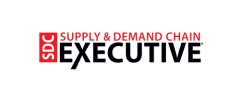
This edition’s lead story looks at why 2023 has been the year of the marketplace seller. Online marketplaces have been the talk of the town for the last couple of years. But, while they continued to make headlines in 2023, marketplaces themselves were no longer the hot commodity this year; marketplace sellers were. Retail TouchPoints’ story looks at the changing dynamics of the marketplace industry landscape, with newer platforms having become sophisticated enough to challenge Amazon’s dominance. Sellers have firmly moved into the driver’s seat. Amazon, the largest clothing retailer in the U.S., charges sellers a 17% fee plus additional fees for fulfillment and advertising, making it one of the most expensive Amazon categories. But now Amazon will lower the transaction fee from 17% to just 5% for under-$15 apparel items as it faces SHEIN ‘s competition, reports Marketplace Pulse. Shein’s biggest strength is its supply chain, which is tuned to introduce thousands of new designs daily while dynamically adjusting which products manufactured are uniquely fit for clothing. commercetools addresses one of the biggest challenges multi-brand enterprises face. While the multi-brand strategy has many distinct advantages, managing many major companies under one roof while ensuring consumers see each one as a unique, individual entity can be difficult. Composable commerce provides the perfect solution with flexibility, scalability, and a tech-agnostic approach. The TechCrunch article explains why an in-house platform can undermine a business’s strategy. This article highlights the illusion of control an in-house platform brings and reveals how it can hamper your broader business objectives, such as agility, focus, and scalability. While the allure of absolute control is compelling, technical leaders must critically reassess its long-term viability. Read this and other great stories in this week’s edition.
Notable news from the past week

2023: The Year of the Marketplace Seller
Online marketplaces have been the talk of the town for the last couple of years. But, while they continued to make headlines in 2023, marketplaces themselves were no longer the hot commodity this year, marketplace sellers were. This shift in power dynamic is driven by one major change — Amazon is no longer the only game in town. The last few years have seen a veritable explosion of online marketplaces, and a number of these newer platforms have become sophisticated enough to challenge Amazon’s dominance. Brands, even those built on Amazon, have choices now; and newer marketplace operators like Walmart and Target, as well as OGs like Ebay, are making a determined pitch to be the platform of choice for third-party sellers.

Shein Forces Amazon To Lower Seller Fees
Amazon will lower the transaction fee it charges sellers from 17% to just 5% for under-$15 apparel items as it faces Shein’s competition. Amazon is the largest clothing retailer in the U.S., including online and offline retail. But it charges sellers a 17% fee plus additional fees for fulfillment and advertising, making it one of the most expensive Amazon categories to sell in. Amazon increased the fee to 17% from 15% five years ago, in April 2018. Shein is an order of magnitude smaller than Amazon – its GMV this year, more than $40 billion, is less than 10% of Amazon’s. But most of that $40 billion is in clothing, which Shein is best known for and strongest in. Its supply chain, tuned to introduce thousands of new designs daily while dynamically adjusting which products get manufactured, is uniquely fit for clothing. It is the biggest online-native clothing retailer.

Why Composable Commerce Is The Single Best Solution For Multi-brand Businesses
Multi-branding delivers big benefits for organizations looking to grow their business. Well-known names including Coca-Cola, TJX Companies, L’Oreal and Unilever are all multi-brands along with luxury brands such as LVMH and Kering. Even Meta jumped on the multi-brand strategy when it purchased Instagram in 2012, with its first acquisition in a portfolio that now includes Threads, WhatsApp and Oculus among others. While the multi-brand strategy has many distinct advantages, managing many major companies under one roof while ensuring consumers see each one as a unique, individual entity can be difficult. As multi-brands are often a result of mergers and acquisitions, business leaders typically have to grapple with disparate commerce systems, which translates into more work and more resources with less control over the big picture. The more brands you own, the more complicated it gets — eventually, it seems almost impossible to consolidate operations and streamline processes. But it’s not. Composable commerce, with its flexibility, scalability, and tech-agnostic approach, has emerged as the perfect solution.

B2B Marketplaces Fast Track Into Mainstream US Business Sales
With each passing year, B2B marketplaces are gaining market share and rapidly becoming a mainstream business-to-business sales channel. Digital Commerce 360 projects that in 2023, they will account for 12% of all B2B ecommerce sales compared with 7% of all B2B digital commerce sales in 2022. The year is ending, but B2B marketplaces will end the year as they began. Namely, as the fastest growing sales channel in B2B ecommerce. In 2023, the sales on B2B marketplaces will grow 100% and total $260 billion from $130 billion, based on a projection from Digital Commerce 360 within the recently published 2023 B2B Marketplace 500 report. With each passing year, B2B marketplaces are gaining market share and rapidly becoming a mainstream business-to-business sales channel. Digital Commerce 360 projects that in 2023, they will account for 12% of all B2B ecommerce sales of $2.173 trillion compared with 7% of all B2B digital commerce sales in 2022.

Why In-house Platforms Can Undermine Your Business Strategy
In the rapidly evolving tech landscape, the promise of control reigns supreme. And it’s why founders, CEOs, and technical decision-makers are increasingly drawn to the idea of building in-house platforms. The appeal is understandable — complete sovereignty over every layer of the tech stack, from the user interface down to the most granular data interactions. It’s an intoxicating vision that promises a bespoke solution tailored precisely to a company’s unique needs. Yet, as alluring as this complete control might seem, it’s often more a mirage than reality. As the CTO of WSO2 with 20-plus years of industry experience, my hands-on involvement in productizing development platforms has given me an in-depth understanding of the challenges and opportunities in this space and shaped my perspective on the intricate balance between control and agility in tech strategy. I’ve also brought this perspective to my efforts in driving the digital transformation programs for numerous enterprises, combining strategy with practical execution to help architect and implement digital platforms that directly contribute to the success of these organizations.

AI Will Transform E-Commerce—But How Do We Actually Get There?
For retailers looking to drive e-commerce growth, the promise of generative AI (GenAI) is undeniable. According to the State of AI x Commerce Report, a study Bloomreach and others did in partnership with Future Commerce, 64% of commerce leaders agree that AI can boost customer experiences and provide a distinct competitive edge. This sentiment is overwhelmingly positive toward new technology, especially considering this industry didn’t really embrace digital methods until the 1990s. A handful of companies have already turned that positive sentiment into action. This past year, we’ve seen some retailers move to adopt GenAI at a rapid pace, from larger instances like Walmart’s Voice Order to more internal instances, like our client UrbanStems’ use of AI for creating images of potential products. But these cases are just a few. What does the adoption of GenAI mean for the many?

Returns into Revenue: How Reverse Logistics Changes the E-Commerce Sustainable Business Model
In the context of omnichannel retail, reverse logistics refers to the process of managing the flow and processing of products, materials, and goods from the recipient back to the manufacturer or retailer. Historically, the business opportunities presented by reverse logistics have been underutilized; today, savvy retailers are reimagining how they can tap into this back channel to achieve profitable growth and competitive advantage. Investment in reverse logistics can yield substantial long-term cost savings for eCommerce service providers. For example, streamlining returns can lower costs for processing and handling. Similarly, when retailers can analyze the reasons for returns, they gain insights into product quality, demand patterns and customer preferences. Applying this information, eCommerce service providers can optimize inventory management, prevent overstocking, and reduce holding costs.
.
To subscribe to the Ecommerce & Marketplaces Newsletter, please complete the subscription form on this page (either to the right or below this article, depending on device). If you have any suggested content for this newsletter or would like to discuss evolving your organization’s digital commerce, please write to us at info@mcfadyen.com.
Related Articles
Turn Insight Into Impact.
Start Today.




